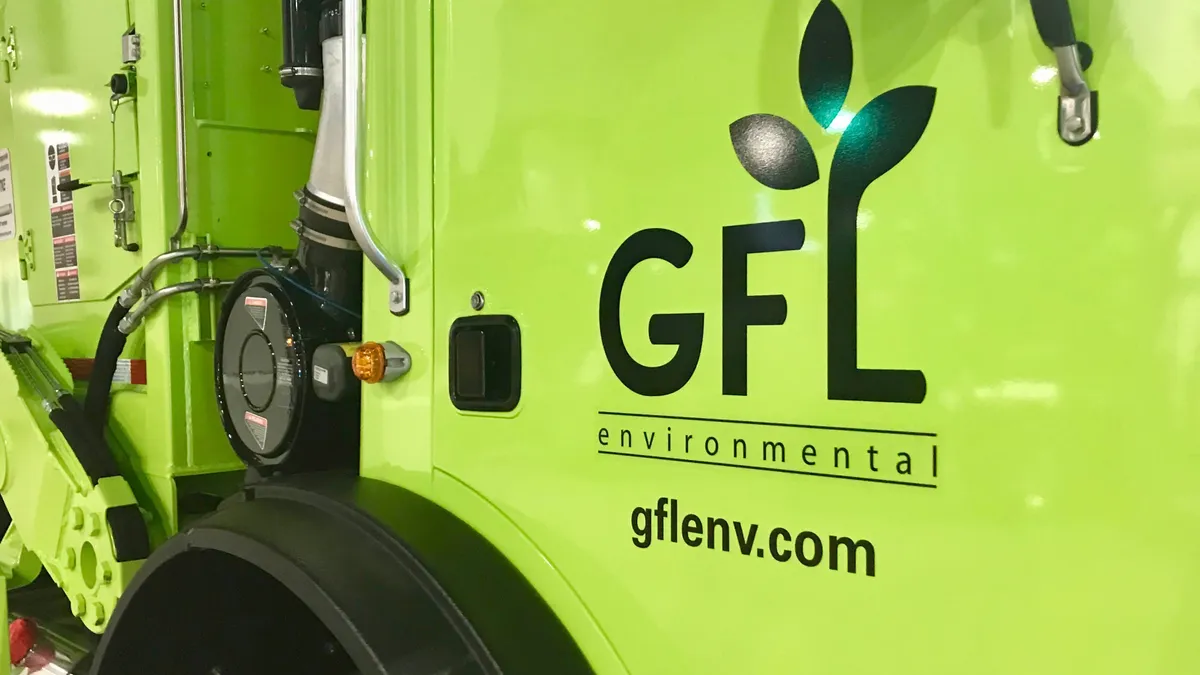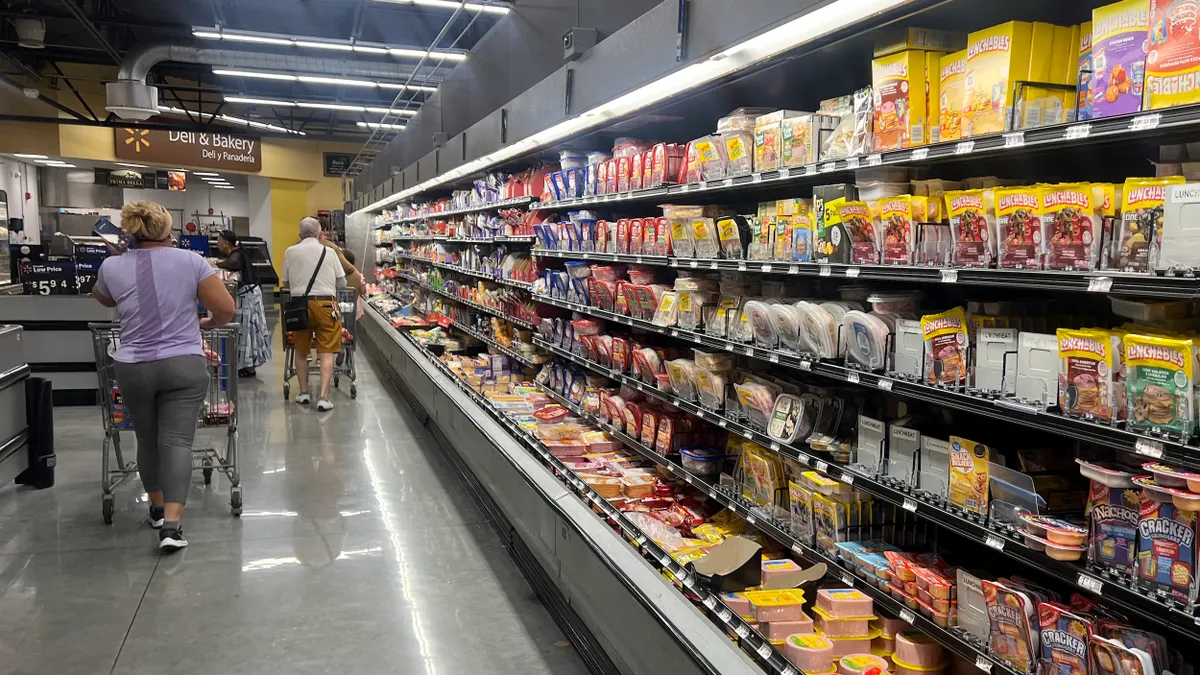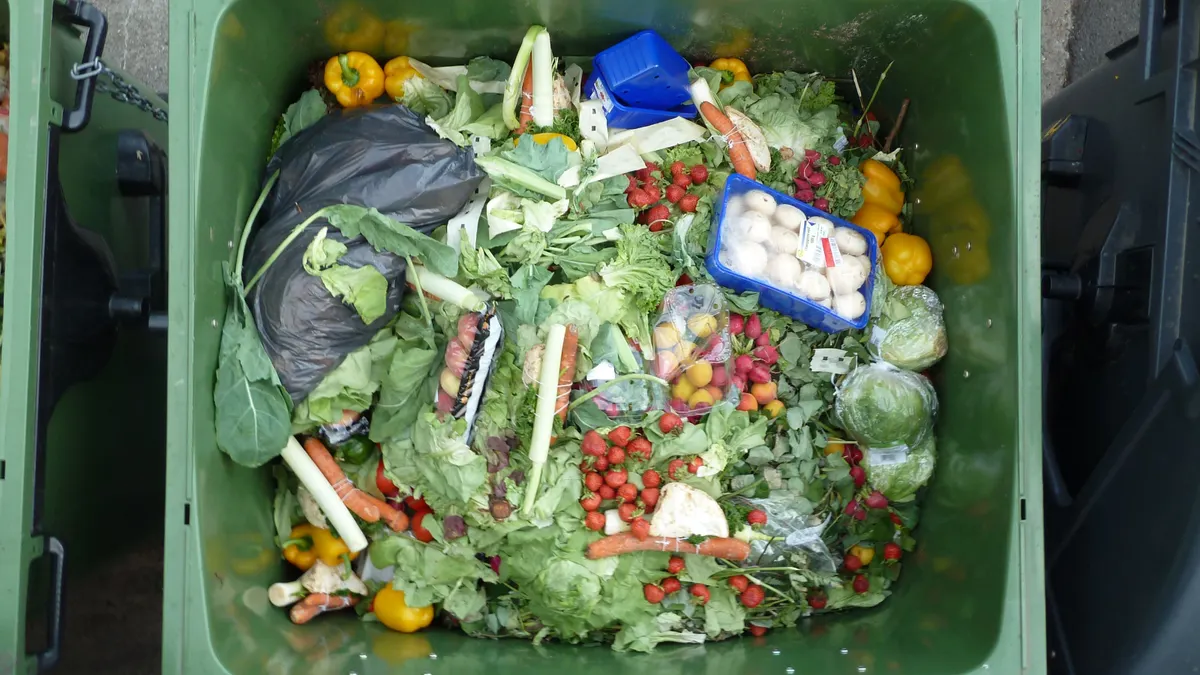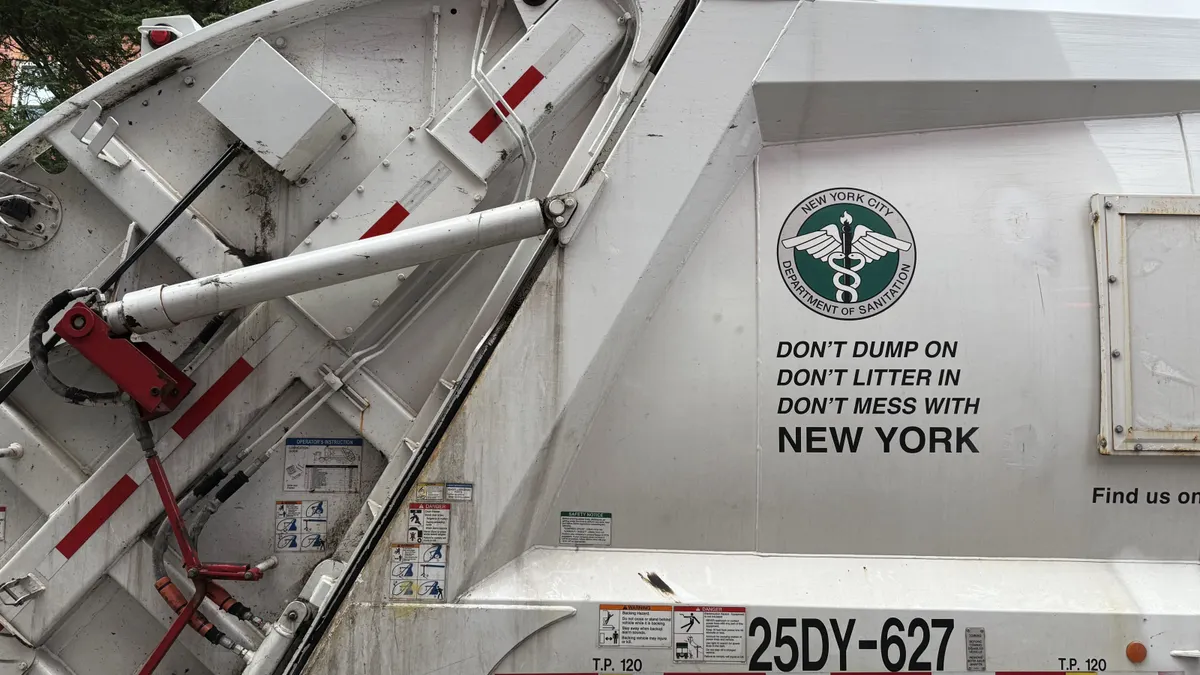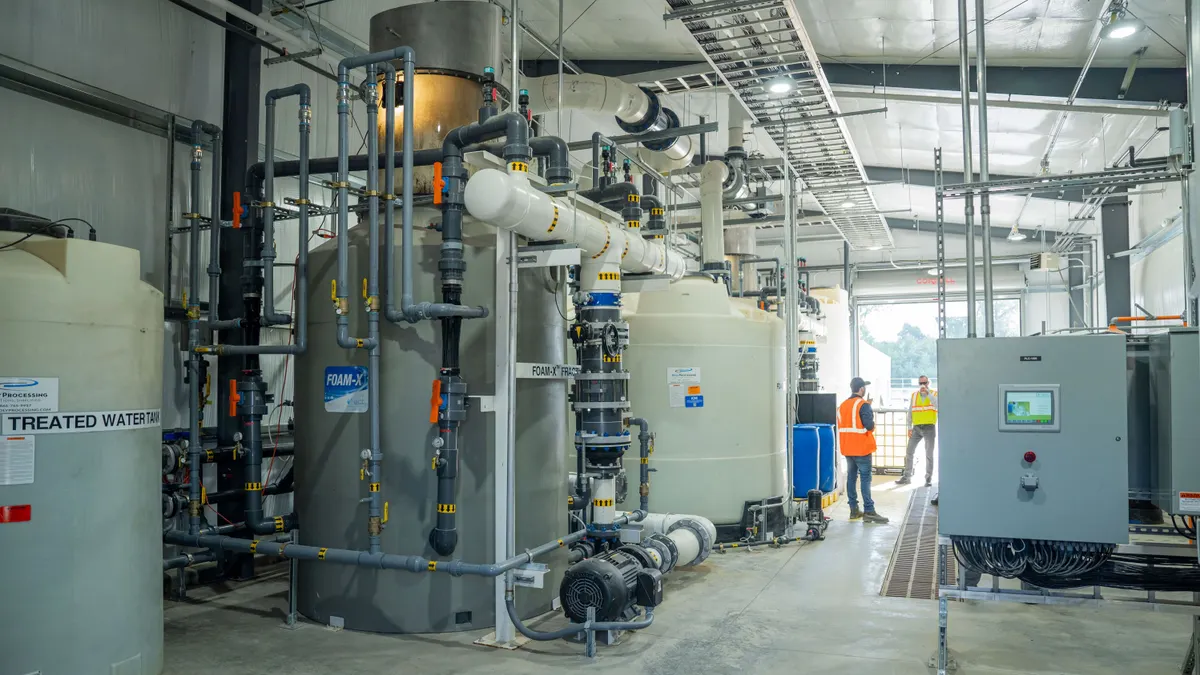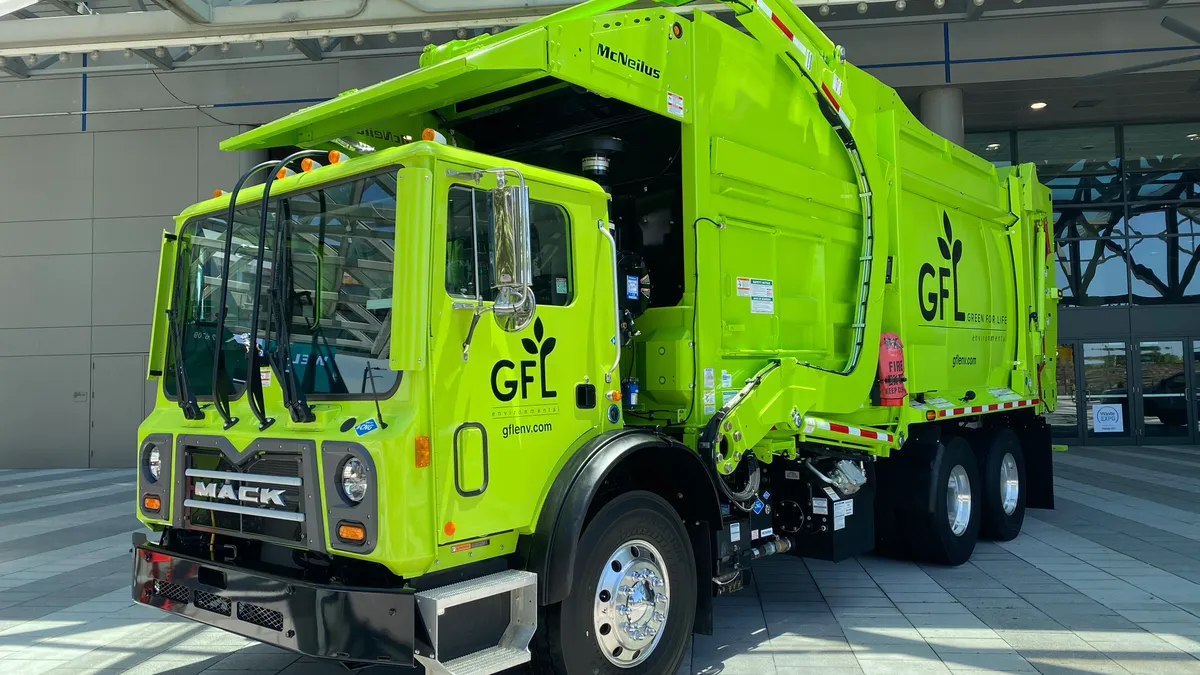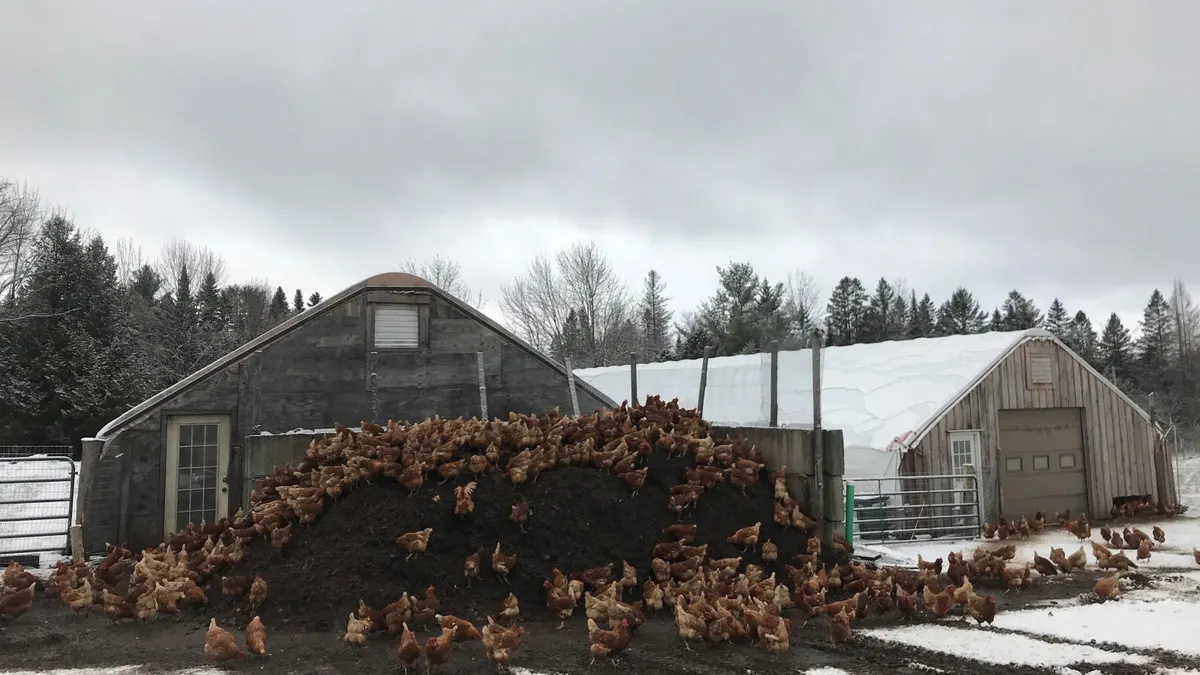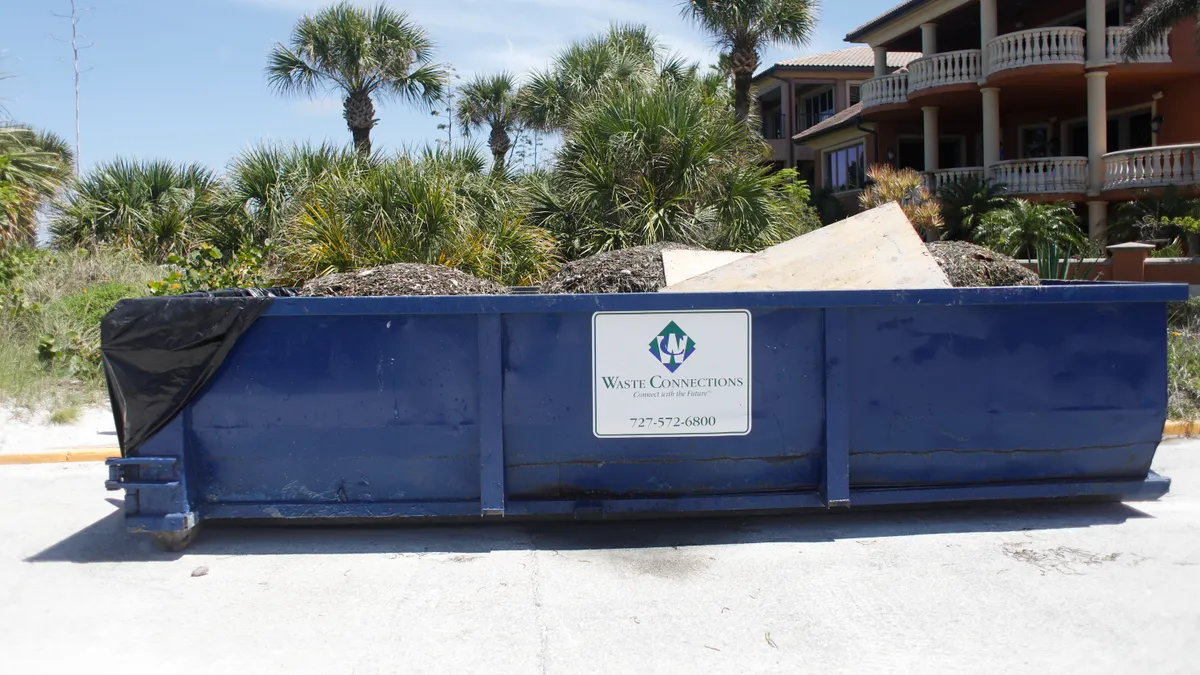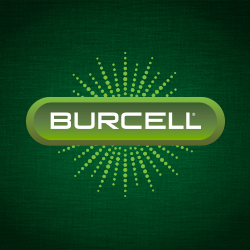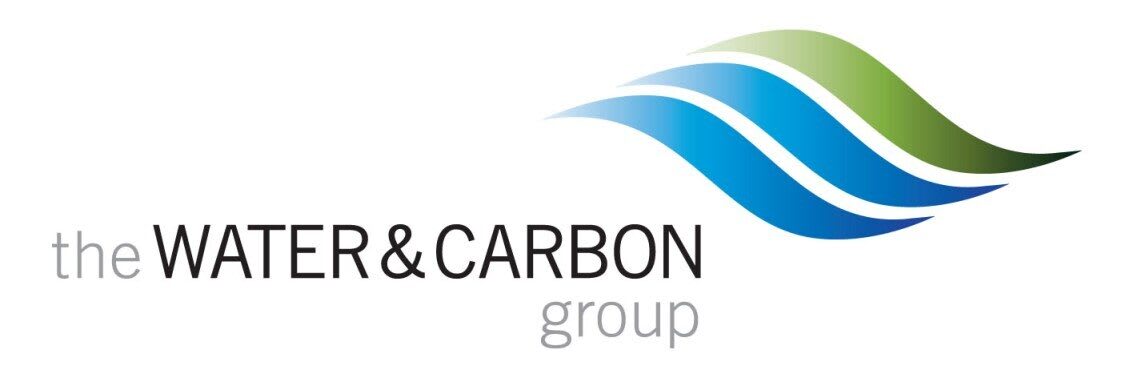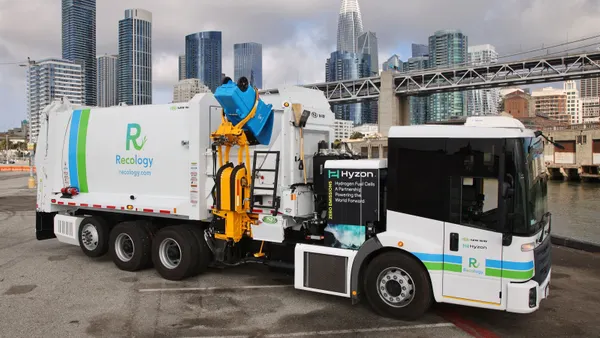Key details are still forthcoming on GFL Environmental's planned IPO (estimated to be worth $1.5 billion), but the company's first filing offers copious new insight into one of the waste industry's fastest-growing agglomerates.
Since its launch in 2007, GFL has become the fourth-largest environmental services provider in North America by securing key municipal contracts, expanding through acquisition and leveraging multiple lines of business to build its base. The Canadian company entered the U.S. in 2016 with its acquisition of Michigan-based Rizzo Environmental Services and became a serious domestic force after buying Waste Industries in Nov. 2018.
Expansion has continued this year. CFO Luke Pelosi told Waste Dive in May that he anticipates GFL will eventually go down in industry history as "one of the largest players in the continent that came from very little."
Ahead of the expected fall offering, here are key details about GFL's current portfolio and future growth plans from the company's 400-page F-1 filing with the U.S. Securities and Exchange Commission.
Finances
- When reporting numbers "as if the Waste Industries Merger had occurred on January 1, 2018," GFL projected nearly 2.67 billion Canadian dollars (approx. $2.06 billion) in pro forma revenue for 2018. Actual 2018 revenue was more than CA$1.85 billion.
- A CA$459 million increase in net loss between 2016 and pro forma 2018 shows the cost of GFL's aggressive acquisition strategy. A CA$458 million increase in adjusted EBITDA over that same period shows it may be paying off.
- GFL's revenue for Q1 2019 was CA$720.9 million, with its U.S. solid waste business contributing CA$341 million. The company's MRF operations took a CA$1.7 million hit due to recycling commodity prices.
- Patrick Dovigi (GFL's founder, chairman, president and CEO) hauled in nearly CA$47.5 million last year, due in large part to CA$38.76 million in option-based awards. This is multiple times more than even the highest-paid industry CEOs earned in 2018.
This filing further confirms GFL has already surpassed Advanced Disposal Services as the industry's fourth-largest company based on projected revenue, and shows just how sizable its U.S. operations have become. While company executives often point to their significant Canadian foundation as core to the business, GFL reported that 46% of pro forma 2018 revenue came from the U.S. That share is expected to grow.
Like many of the publicly-traded companies GFL now competes with, much of its solid waste revenue comes from residential and commercial collection. Municipal contracts of varying categories were responsible for approximately 34% of the company's pro forma 2018 revenue.
GFL reported landfills driving only about 6% of its total pro forma revenue and said its sites have an estimated 40-plus years of remaining life. The first figure is notably lower than some of its larger competitors. While GFL clearly still values opportunities for vertical integration, the filing also lays out a case for why the company may not always need to own disposal sites if it can control enough collection volume in a region to leverage lower tip fees.
GFL lists the expected competitors for its solid waste business, with Waste Management and Waste Connections also overlapping in the soil remediation category. A different mix of players is listed as liquid waste competitors — Clean Harbors is the only one in both countries — in an example of how GFL might have room to grow differently than other solid waste giants.
Portfolio and growth plans
- GFL now operates in the majority of Canadian provinces and 23 U.S. states. This includes a network with dozens of landfills, transfer stations and MRFs that puts it in the upper echelon of industry companies.
- The company's solid waste fleet currently includes 4,340 routed vehicles — 13.6% of which run on CNG. Tracking with industry trends, GFL plans to invest in more CNG and remains open to electric vehicles.
- GFL currently employs an estimated 9,500 employees in North America. Approximately 16% of them were represented by unions at the end of 2018. This is slightly lower than unionization rates for the top three industry players.
- The company's growing list of assets is due in part to 100-plus acquisitions completed by GFL to date, including 18 last year. GFL has already acquired 19 companies this year.
- Beyond the multi-billion-dollar Waste Industries deal, GFL's largest U.S. solid waste purchase was CA$400 million for Rizzo. The company also reports spending CA$84 million on Colorado-based Bestway Disposal in 2018 and CA$35 million for North Carolina-based Pink Trash this spring.
GFL plans to build on this portfolio through a three-pronged strategy of "generating strong, stable organic revenue growth," "executing strategic, accretive acquisitions" and "driving operating cost efficiencies across our platform."
The first element involves making itself a "'one-stop' provider of environmental services" — in contrast to some competitors that don't have the same breadth of offerings — by doing more cross-selling across different customer bases. GFL also sees room to make existing relationships more profitable, since "many of the businesses we have acquired have never implemented pricing growth strategies in their markets."
Furthermore, many municipal and commercial contracts are only on their first or second renewal cycles so GFL sees opportunity to add services and increase pricing. One potential area for expanded services may come after GFL completes a three-year plan to "further identify and embed sustainable management initiatives into our operations."
In terms of expansion, the company's sights are particularly set on Western Canada and the Midwestern U.S. Specific details about GFL's expected pipeline were left blank in the F-1 filing. GFL is seen as a prime buyer for assets in the latter region if the U.S. Department of Justice requires any divestments to approve Waste Management's purchase of Advanced Disposal.
IPO plans
- Official details have not yet been published, but GFL is expected to list on both the Toronto Stock Exchange and a to-be-determined U.S. exchange. Subordinate voting shares will be available to new investors. All multiple voting shares will be controlled by Dovigi, Josaud Holdings Inc. and Sejosa Holdings Inc.
- Beyond further expansion plans, GFL's long-term debt is a notable factor the IPO could help pay down. According to the filing, that figure stood at more than CA$6.3 billion as of March 31, 2019.
- The filing specifies "all available funds and future earnings" will go toward operating and growing the business, with no plans for cash dividends "in the foreseeable future."



